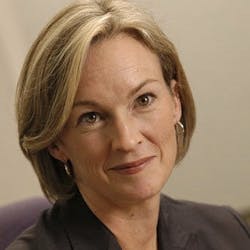Hitachi’s Alex Rakow and Erica Hauver explain why microgrids must become more embedded in social policy and public infrastructure planning.
Alex Rakow, Hitachi
Erica Hauver, Hitachi
To many readers, Evan Osnos’ article, “Doomsday Prep for the Super-Rich” in last month’s issue of The New Yorker may seem extreme. America’s wealthy elite preparing for armageddon scenarios with bunkers, food and water stockpiles, helicopters on constant standby ready to whisk their owners to their ‘safe’ homes. While this may be the first mainstream media to shine a light on how the privileged prepare for natural and man-made disasters, those with means have been taking steps to protect themselves for climate change, terrorism, and other disasters for decades.
Hitachi, like a number of our peers in the energy sector, has been approached to work on microgrids for the rich and famous. However, the fact that microgrids can provide resilience while simultaneously lowering energy costs means that the technology need not be exclusive to the elite.
Communities and institutions of all kinds are now seeking out microgrids as a means to protect their operations and people. Hitachi has worked with many communities – urban, rural, and remote – to evaluate microgrid projects. Many of these have been home to low-income or otherwise vulnerable populations, for which energy assuredness can mean the difference between life and death.
Although climate change is a global process, its effects are felt locally, and unevenly. Poor communities are most affected not just by local pollution from burning fossil fuels, but also by flooding, droughts and other severe weather events.
As we in the clean energy sector work on new technologies and new models for our energy system, we should ask ourselves: How can we ensure that the benefits of the new path we are forging are enjoyed equitably?
The strategic deployment of microgrids provides an important part of the answer. As our new administration embarks on a large scale infrastructure program, the installation of microgrids in vulnerable communities should be part of the conversation.
Resiliency for those in need
Energy resilience refers to the ability of communities or institutions to withstand power outages without harm to people or operations. Microgrids can provide high levels of energy resilience to homes, and facilities that are critical to the health and wellbeing of a community, such as healthcare and emergency response facilities.
The number of power outages caused by storms each year has increased steadily over the past 25 years. In the wake of Hurricane Sandy, New York State created the NY Prize program to spur microgrid development and build reliability and resiliency into the electric grid.
Many of the project designs that won NY Prize grants offer good examples of microgrids for social justice. These projects focus on ensuring power supply to critical facilities for low-income or otherwise at-risk communities, particularly during a storm or other crisis.
Some designs provide microgrids for public housing where residents are restricted in their ability to evacuate. Others protect power supply to homeless shelters, nursing homes, or hospitals. Still others keep electricity flowing for public services in poor communities such as fire, police, and local government – ensuring that those most in need are not left behind in an emergency.
Elsewhere in the world, energy inequity takes on other forms. For those living in remote or island communities, and for many of those living in the developing world, a lack of access to reliable energy can hinder education, commerce, health and safety.
In response to the environmental and social problems this causes for island nations, the Rocky Mountain Institute (RMI) created the Islands Energy Program, which helps island communities move away from diesel generators to cleaner, more resilient systems. RMI found that even with subsidies, ratepayers in island nations pay an average of 35 cents/kWh for electricity, and the vast majority of GDP in island nations is spent on importing fuel.
Microgrids can reduce island communities’ dependence on imported diesel, saving residents and businesses money, improving the resilience of critical services, and creating a healthier environment. RMI has already supported five microgrid projects as part of the Islands Energy Program, and has more in the works.
Displacing dirty peaker plants
The transition away from fossil fuels to clean, renewable sources of energy will help promote social justice in several ways. First, it will protect the health of people that currently live downwind or downstream from centralized power plants. The American Thoracic Society estimates that air pollution alone causes nearly 10,000 deaths in the United States each year. This does not include deaths associated with chronic conditions caused by air pollution such as cancer, new onset asthma, and diabetes.
It is well documented that the pollution that results from burning fossil fuels affects poor communities and people of color disproportionately. This is largely because high emitting peaker plants are much more likely to be located nearer to these communities. A 2016 study from the University of California, Berkeley, found that over 80 percent of the peaker plants in California are located near low income communities and communities of color.
Placing microgrids in these communities can have the double benefit of providing energy resilience and offsetting emissions from peaker plants. It’s important to note that microgrids by their very nature have a unique capability to displace peaker plants. A solar photovoltaic array or wind farm by themselves may not produce sufficient power when peaks occur. Their variable output often prevents them from being used by a utility or regulatory commission as the basis for closing a peaker plant.
On the other hand, microgrids that include energy storage can manage their portfolios of DER as dispatchable resources. Microgrids can use controls to automatically participate in demand response programs, and help the utility to shave peak loads.
Improving the business case for renewables
The transition to renewable energy sources is also essential to stemming the advance of climate change. It is becoming increasingly clear that it is again poorer communities and communities of color that will feel the effects of climate change first and worst. The areas of the world that are most susceptible to rising sea levels and increasingly severe storms are overwhelmingly low-income and non-white.
Even in the United States, poor people have been disproportionately affected by severe storms, from the Ninth Ward after Katrina to Far Rockaway after Sandy. These communities are at risk both because of where they are located, and because the people who live in them often lack the resources to adapt and rebuild once flood waters recede. Microgrids can provide a double benefit in these communities, protecting homes and services from power outages and adding renewables to the grid.
By improving the business case for renewables projects, microgrids are encouraging their proliferation.
First, a microgrid increases the value a business or community gets out of its investment in renewables, by providing not just a cleaner energy portfolio and lowered energy costs, but a rock-solid, resilient energy supply.
Second, unlike a stand-alone rooftop solar array, microgrids do not rely on net-metering to produce cost savings for customers. Net-metering policies are being renegotiated before public utility commissions all over the country, and are likely to be replaced in most jurisdictions over the coming years with tariff structures that compensate DER owners at a rate lower than the full retail rate. Well designed microgrids don’t typically export a significant amount of energy to the grid, so investments in microgrids are unlikely to be affected by this regulatory shift, no matter what the outcome.
Microgrids for social justice: A new way forward
At Hitachi, our corporate strategy is based on the concept of Social Innovation. For us, Social Innovation is the imperative to develop and implement technological solutions that create positive social outcomes. As we work to modernize and improve the ways in which our society is powered, we are pushing ourselves to find solutions that are profitable, environmentally sustainable, and socially just. Our decision to invest in developing new microgrid technologies and applications came from our understanding of the unique potential of microgrids to achieve all three of these goals.
Of course, whether microgrids realize their potential will depend on how they are deployed. More programs like NY Prize are needed to help communities gain access to this technology quickly. Right now, only a few states have programs to promote microgrid development. The Trump administration has signaled that they are interested in including grid modernization and renewable energy projects in their infrastructure program. Microgrids should be among these projects as a means of upgrading the distribution grid, hardening infrastructure, and protecting vulnerable communities.
There is an added benefit for policy makers who champion microgrid development. Microgrid projects are infrastructure projects that create ‘green collar’ jobs for construction workers, electricians, engineers, and maintenance workers. All the inputs in microgrids also mean manufacturing jobs building PV panels, wind turbines, energy storage systems, inverters, cables, and a hundred other pieces of equipment.
As the earth changes all around us, we must create new models for how we generate and use energy to adapt and survive. By focusing on microgrids for social justice, we have a chance to build a new energy system that is not only cleaner, but more equitable.
Alex Rakow is a senior project manager for Hitachi Energy Solutions Division, and author of the book Energy Resilient Buildings and Communities, from Freemont Press.
Erica Hauver is senior vice president, Hitachi Energy Solutions Division.







